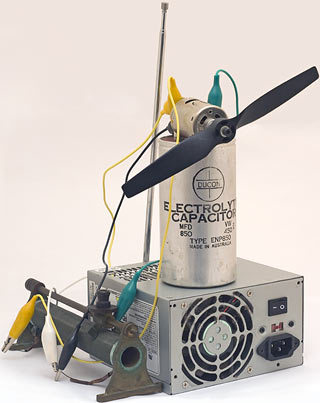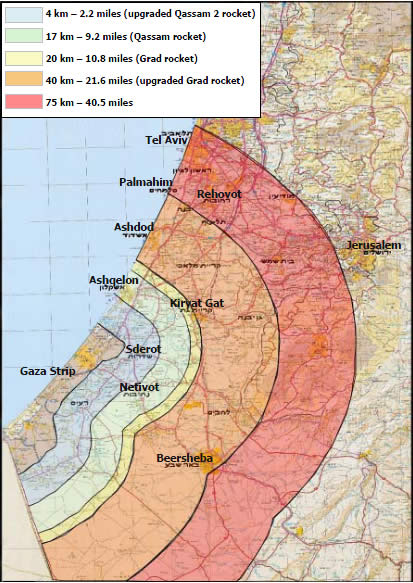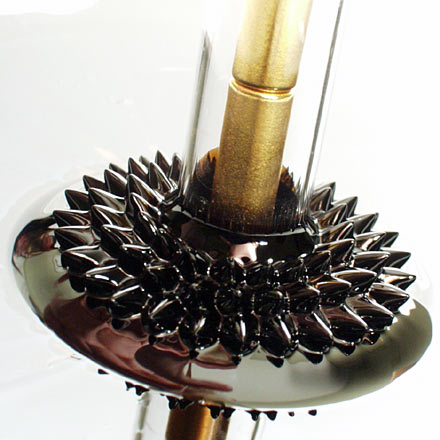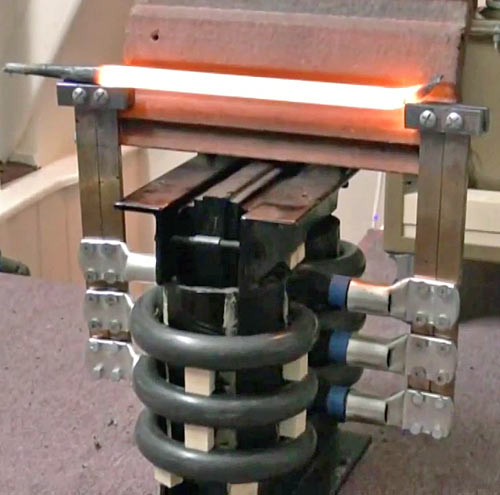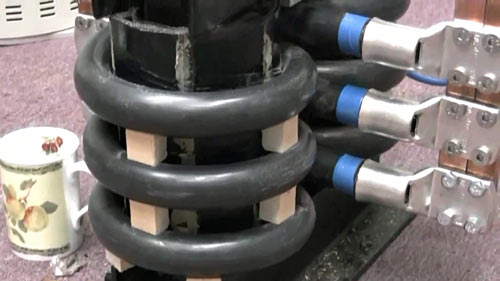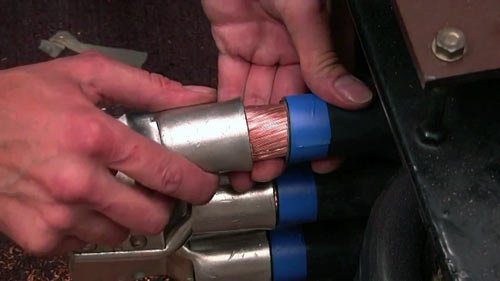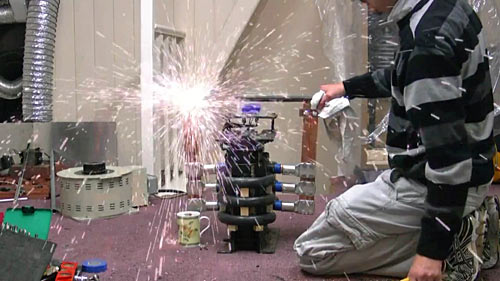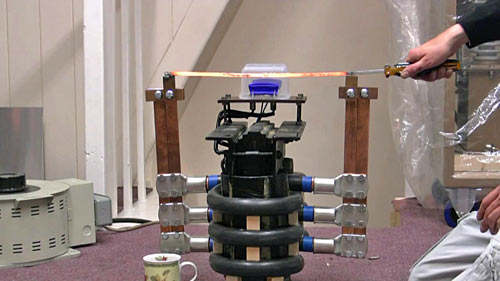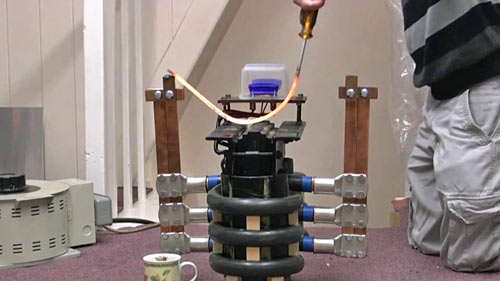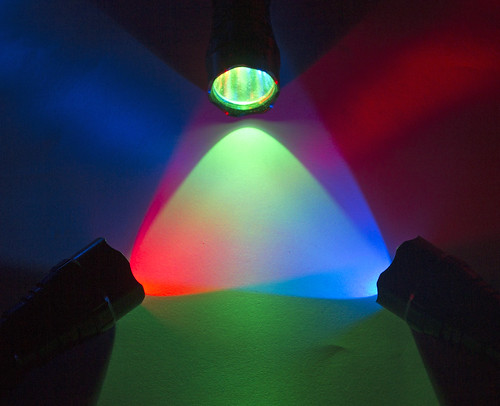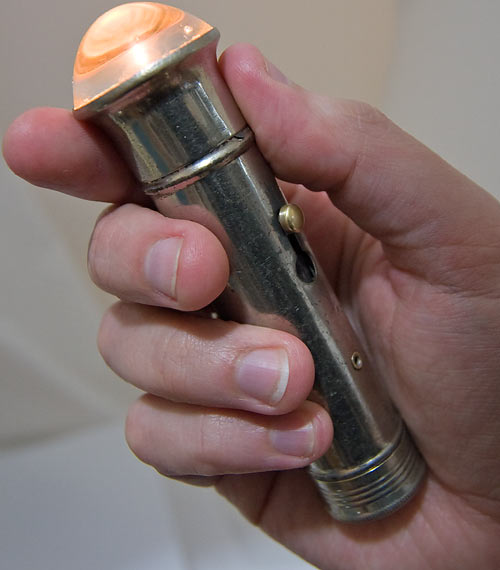
I've been spending entirely too much time playing MechWarrior Online.
If you've got a Windows PC with moderate graphics power, or something that can be tricked into acting like one, try it. It's free. And if you do not want to fight people from distant nations in a giant walking tank, I am not at all sure that I want to be friends with you.
(There will be a certain amount of BattleTech-y jargon in this post. I make no apologies, since all right-thinking people pored over Technical Readout: 3025 at the bus stop in 1987 as I did, memorising even the stupidest-looking 'Mechs, and thinking long and hard on the subject of internal-combustion Demolisher tanks only costing about 20% more than 25-ton scout 'Mechs. You are allowed to not have also played hundreds of hours of the unlicensed multiplayer-only tabletop-BattleTech knockoff Mechforce on the Amiga, but that's as far as I'm willing to go. Oh, and in case you care, the modern equivalent to Mechforce is MegaMek.)
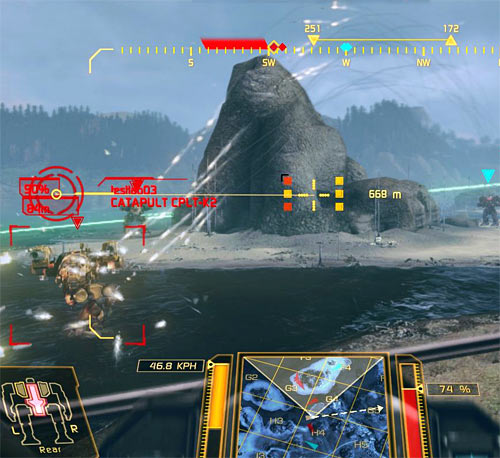
MechWarrior Online is currently in open beta. It is not bugless, and right now the only game mode is eight-a-side team deathmatch on a small handful of maps, with a capture-the-base mechanic to avoid the "Where's Wally" problem in which the single survivor of one team goes and hides until his opponents quit in disgust.
But it doesn't crash very often, and stuff you earn in the beta will carry over into the full release, so it's well worth trying.
Because, again, it's free.
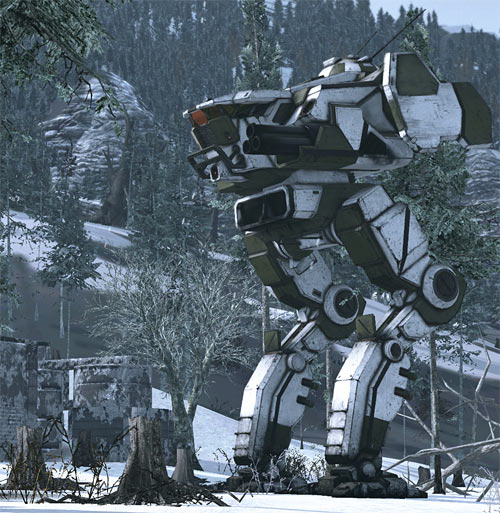
"Wait a minute," I hear you say, "this is actually an Allegedly Free Game, right? They want you to send them money if you want a 'Mech that can compete, don't they?"
Well, yes, Piranha Games would very much like you to whip out your credit card or PayPal account and pay for "MechWarrior Credits" ("MC"), which can be purchased in five tiers from $US6.95 for 1250 MCs (180 MCs per dollar) to $US99.95 for 25,000 MCs (250 credits per dollar). But you really can play, and play competitively, without spending a penny.
You can certainly play competitively without buying the first only-available-for-real-money "hero 'Mech", the "Yen-Lo-Wang" variant of the Centurion. That costs 3750 MCs, meaning you'd have to buy at least the $US29.95 6500-MC package (217 MCs per dollar), and its main selling point is that it multiplies all "normal" money, "C-Bills" you make in the game by 1.3. But that's about the only nice thing you can say about it.
I will digress about the "Wang", as everyone calls both it and anyone driving one, for a moment, because that 'Mech exemplifies an important piece of MechWarrior Online's design. (This may have debuted in some other MechWarrior game, by the way; I haven't played the last couple of them. I haven't played Crysis-based MechWarrior, Living Legends either.)
The Wang is not a very good 'Mech at all, because the only weapon "hardpoints" it has are two ballistic ones on the right arm, and two energy hardpoints in the centre torso. You only have two "slots" left over in any 'Mech's the centre torso after the gyro and engine, so you can't mount any big lasers or PPCs or whatever there. The best you can do is two Medium Lasers. Even a Medium Pulse Laser will take up both slots and leave you no room to install a second energy weapon.
Old-style tabletop BattleTech did not work like this. Per the original rules, you could strip any 'Mech down to the frame and rebuild it however you liked, provided it didn't end up overweight.
(Weight limits are one of the distinctive features of BattleTech. A "75-ton" 'Mech can be kitted out with less than 75 tons of gear if you're feeling perverse, but not so much as an ounce more. Since any 'Mech with hands can, per the original rules, also yank a two-ton tree out of the ground and whack another 'Mech with it, and since 'Mechs can operate on a variety of planets with different gravity strength, this makes no sense at all. But it's always been in the rules, and MechWarrior Online follows them.)
So by the old rules, you could take the LRMs off an Archer and put on lots of heat-sinks and lasers, or you could somehow cram an AC/20 into any scout 'Mech by downsizing the engine and stripping off armour and arm actuators, or you could stick jump jets on anything. You name it. The "fluff" may say that this 'Mech is prone to knee-joint problems and that one has especially fast torso twisting, but there was no actual difference in the game itself.
In MechWarrior Online, the hardpoints are fixed. If you buy the Catapult variant that has six missile hardpoints and nothing else, you will never be able to put a laser on it. And 'Mechs really do have different cockpit visibility, arm and torso movement ranges, and so on.
Which is why the Wang sucks. It comes with an AC/20, the heaviest-hitting gun in the game, on its right arm, but opponents with a clue will try to shoot that arm off any Wang they see. And if you're like me and playing from Australia, your 250-millisecond-ish ping time makes ballistic weapons very hard to use. Lasers and lock-on missiles (both long-range and Streak short range) work well enough, but even PPCs are hard to aim when the darn thing always goes off a quarter second after you press the button, and heavy autocannon are a huge pain.
The hardpoint system means Wang pilots are stuck with these problems, though. They can put two lighter autocannon in the right arm if they like, or even a couple of machine guns (which are almost harmless unless shooting a de-armoured location, in which case they become critical-hit monsters). But, to add insult to injury, the Wang's arms don't even have very wide movement arcs. So you almost get the restricted tracking of a torso-mount weapon, with the vulnerability of an arm-mount one.
OK, back to the "pay to win" problem, and why MechWarrior Online does not suffer from it, much.
You can buy some MCs with real money right at the outset, and buy your own 'Mech.
This isn't necessarily even very expensive; the cheapest 'Mech in the game so far is a Commando variant that goes for only 680 MC, giving you plenty of change from even the $US6.95 MC package.
(The most expensive 'Mech is an Atlas variant that costs 13.7 million C-bills, or 5480 MC. You'd need to buy at least the $US29.95 6500-MC package to buy it right off the bat. Oh, and you can't, at the moment at least, buy partially with C-Bills and partially with MC.)
Don't buy right away, though; maybe you won't even like the game! Instead, start out playing the "trial" 'Mechs, which are actually pretty good at the moment (they switch the trial 'Mechs around from time to time. The last batch weren't so great).
Do not jump into the trial Atlas and lumber around in befuddlement at your numerous weapons systems and limited speed and torso aiming envelope. Grab the trial Commando or Catapult, instead. The Commando is nippy and heavily armed for its size (it's exactly tall enough to headbutt an Atlas in the crotch); the Catapult has a simple and useful weapon loadout, and jump-jets, which may or may not reduce the amount of time a newbie spends grinding his face on the scenery.
Newbies do that because MechWarrior Online, like all other "proper" MechWarrior games, has separate controls for your legs and your torso and arms. Using the default keyboard and mouse controls (which work well), W and S change throttle setting, and A and D turn your legs left and right. The mouse moves your arms and torso. Arms - and any weapons on them - get to where you've moved quickly, then the torso - and any weapons on it - catches up.
Since many 'Mechs have a quite wide torso traverse - many can aim directly behind them with their arms - it is easy to lose track of what you're doing and flail around randomly while nudging the scenery and being torn to shreds by heartless opponents. Thus far the game also lacks any sort of interactive tutorial, too, so you have to learn to drive under fire.
(On the subject of shooting behind you, by the way, MechWarrior Online does not allow rear-facing weapons, because they couldn't figure out a way to make them useful and fun at the same time. There are also no 'Mech collisions in the game at the moment; they took out the collision code after seeing how often a 'Mech would be knocked down in one place then stand up somewhere very different. Collisions, and Death from Above, are promised to be reinstated once they've sorted this out.)
Anyway, pick a trial 'Mech, and play. This will earn you the in-game "C-Bills" money, but not experience points. But you don't have to pay to repair or re-arm a trial 'Mech either, and you get money even when you lose a game.
Which you will, a lot, because the match-maker at the moment doesn't seem to see any difference between a new player in a trial heavy 'Mech and a hugely experienced player in a fully tricked-out heavy 'Mech. In about 20 to 30 games, you'll be able to afford to buy your own light 'Mech.
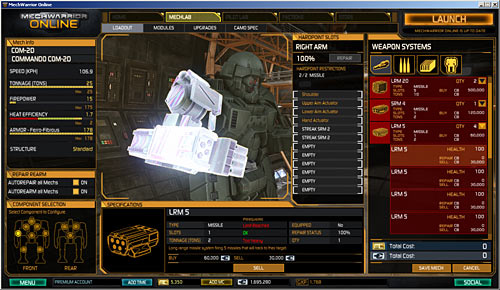
Which is what I recommend you do. A nice fast light 'Mech is the closest to a conventional first-person shooter you can get in this game, zooming around behind enemies spotting targets for your long-range shooters and generally making a nuisance of yourself is a lot of fun, and a light 'Mech with no fancy upgrades doesn't cost much to repair even if you're utterly blown to bits.
Ferro-fibrous armour, endo-steel interior structure, Artemis missile fire control and the extremely expensive XL engines are all available as upgrades; if you still frequently do not survive a battle, it's best not to bother with any of them. (Especially the XL engine, the cheapest of which costs more than the biggest plain engine. XL engines have extra critical-hit locations in right and left torso; any hit to any of those locations detonates the engine and your 'Mech, making it impossible to turn a profit on that match.)
When you play with an "owned", non-Trial 'Mech, you earn "Mech XP" experience points that can be spent on minor upgrades - 7.5% better heat dissipation, 10% faster turning speed, that sort of thing - specific to that 'Mech variant:
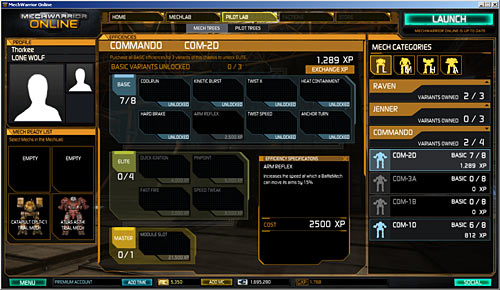
You can get the first eight upgrades by just saving up enough XP; you can only get the "Elite" and higher upgrades - and also double all of the basic-upgrade bonuses, which is rather nice - if you've bought all eight upgrades for three variants of that 'Mech model.
This is made easier by "General XP", which can be spent on upgrades for any 'Mech. You can convert Mech XP into General XP one-for-one, but it costs 40 MC per thousand XP converted.
You don't have to convert any points, though. You can just play with each 'Mech variant until you've earned enough points with it to upgrade it fully.
The Elite upgrades aren't that amazing, either; the double bonus to the Basic upgrades is much more exciting, if you ask me. Elite offers you 33% faster shutting down and starting up, 15% better weapon "convergence" (accuracy of aiming at the crosshair), 5% faster weapon firing and a 10% higher top speed, but that'll cost you 21,500 experience points, versus 14,250 for all eight Basic upgrades.
And, importantly, there is no way to just buy these upgrades; you can buy Mech Credits and use them to shift Mech XP from one 'Mech to General XP you can spend on tweaking another, but you can't buy experience points.
(You can also only buy pilot upgrades with GXP, but none of those are must-haves either.)
As you may have gathered, I could keep rabbiting on about this game indefinitely. In future posts, I may.
Just go and play it. It's fun.
(And do feel free to send me some money so, despite all the above, I can buy some more MCs with which to shift my XP points around. And buy more 'Mech bays, slots for owned 'Mechs so you don't have to sell one before you can buy another. Papa needs a new BattleMech carport, people!)
